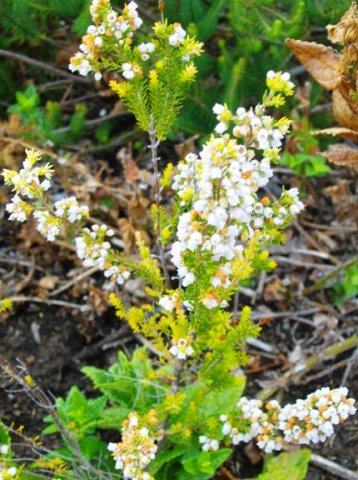Erica bolusiae

Author: Ivan Lätti
Photographer: Ivan Lätti
Erica bolusiae is or was a shrublet reaching or did reach heights from 40 cm to 60 cm. This is so as one variety has already disappeared from nature, one of the victims of human progress, while the other is critically endangered early in the twenty first century.
The leaves of E. bolusiae are narrow, typically ericoid and distributed in spaced whorls up the stems. Some leaves also envelop the base of the flowers.
The attractive white flowers of E. bolusiae var. cyathiformis are clusters of small, open-mouthed cups with the inner flower parts a little hidden inside the base of the corolla. The four shallow lobes at the tip of the corolla are sometimes tinged pink. There may be tiny white hairs visible on the outer surface of the corolla. The flowers of E. bolusiae var. bolusiae are pink. Flowering happens in autumn.
The species distribution is or was from Yzerfontein to Kraaifontein on the Cape Flats. E. bolusiae still grows in Kirstenbosch where this specimen was photographed during March.
The habitat is and was mainly sandy fynbos on coastal plains of seasonal wetlands and seeps.
Of the two varieties, E. bolusiae var. cyathiformis is now extinct in nature and E. bolusiae var. bolusiae critically endangered. The former had a smaller distribution, fully taken up by human development in the Kraaifontein area, the latter has a little more land to work on still (Bond and Goldblatt, 1984; iNaturalist; Wikipedia; http://plants.newplants.co.za; http://redlist.sanbi.org).

